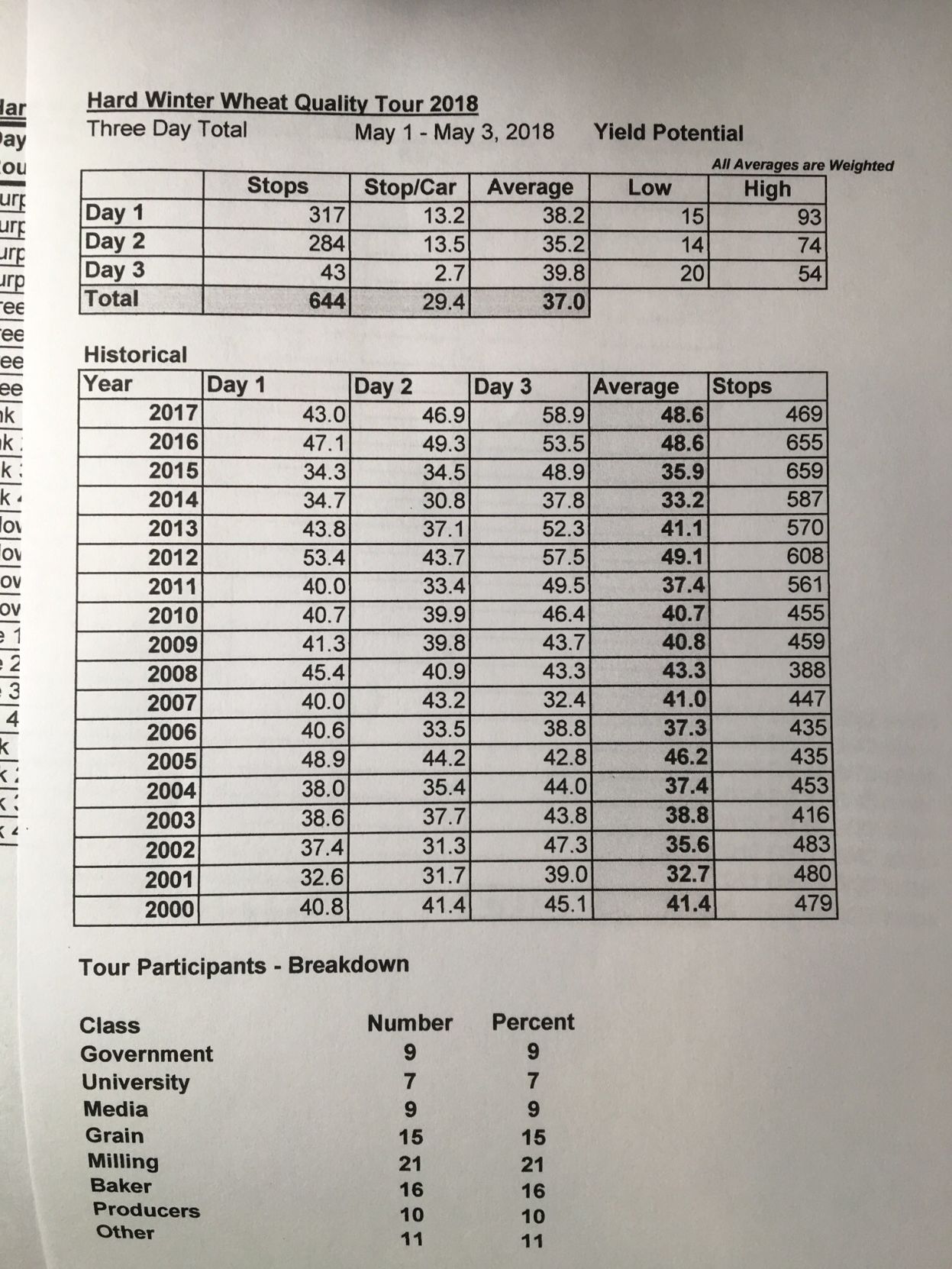After 644 field stops and yield measurements, the more than 95 participants of the 2018 Wheat Quality Council hard winter wheat tour have projected the Kansas wheat crop will average 37 bushels per acre. If realized, that would be 11.6 bushels per acre below what the tour projected in 2017 and the lowest estimate since 2015, when the group guessed the state’s farmers would average 35.9 bushels per acre.
The results were revealed at the tour’s conclusion on the Kansas State University campus in Manhattan on Thursday, May 3.
This year’s 37-bushel-per-acre average could be on the high side, said Gary Millershaski, a Lakin, Kansas wheat farmer who participated in the annual event, which is hosted by the Wheat Quality Council.
“If we don’t get close to average precipitation [from now until harvest] we won’t reach that number,” Millershaski said. “If we get average rainfall, we can maintain that number.”
The Day 3 tour covered six different routes between Wichita and Manhattan. Forty-three field stops were made on Day 3, with participants projecting a 39.8-bushel-per-acre yield. This was the best yield projection of the three days; Day 2’s tour—which stretched from Colby to Wichita, dipping into Oklahoma—projected 35.2 bushels per acre. The Day 1 tour, from Manhattan to Colby and into the southern Nebraska counties, was projected to yield 38.2 bushels per acre.
Millershaski said the crop in northern Kansas looks tough, with drought stressing stand and causing the crop to be behind. From Colby to Syracuse in western Kansas was “some of the best-looking wheat we saw,” he added. Severe weather late on Day 2 limited access to wheat fields between Dodge City and Wichita, he added. Day 3’s wheat looked good also, Millershaski said.
Overall, the state’s wheat crop is roughly two weeks behind schedule, said Dave Green, executive vice president of the Wheat Quality Council. “The big concern is not diseases, insects or freeze damage, it is that it is late compared to normal and also it’s been very dry,” Green said. “We have 60 to 90 days of growth to go and we’re going to run out of time.”
These yield estimates capture yield potential on the day yield measurements were taken—a snapshot in time, if you will—according to Aaron Harries and Justin Gilpin, from the trade group Kansas Wheat.
The participants, who hail from government entities, the milling and baking industry, media and university experts, believe the crop will total 243.28 million bushels, from 7.7 million planted acres. Thus, they aren’t convinced the 37-bushel per-acre average will hold up, Green said.
The tour participants have a fairly accurate track record; in 2017 they projected the crop would average 48.6 bushels per acre and the actual yield was 48 bushels per acre and totaled 333.6 million bushels, according to Kansas Ag Statistics.
Bill Spiegel can be reached at 785-587-7796 or [email protected].




